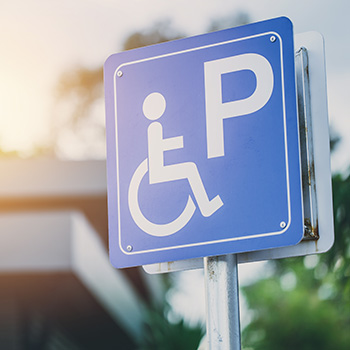Could Self-Driving Cars Make the Disabled More Independent?
 With a few specific modifications, such as mechanical and electronic hand controls and spinner knobs, adults with many physical disabilities can hop into the driver’s seat. Other helpful modifications commonly used in disabled vehicles include pedal extensions, brake pedal guards, and high-tech electronic controls. However, modern self-driving car technology seems even more promising to make disabled individuals even more independent and self-sufficient.
With a few specific modifications, such as mechanical and electronic hand controls and spinner knobs, adults with many physical disabilities can hop into the driver’s seat. Other helpful modifications commonly used in disabled vehicles include pedal extensions, brake pedal guards, and high-tech electronic controls. However, modern self-driving car technology seems even more promising to make disabled individuals even more independent and self-sufficient.
Current Status of Self-Driving Technology
Lots of auto manufacturers are jumping on the self-driving bandwagon, although much of this technology is still in the testing phase. For example, Nissan recently mentioned offering a car with autonomous driving technology by the year 2020. Audi obtained a permit to test self-driving cars on roads in California recently. Many manufacturers are hesitant to claim that these new cars won’t require an able driver, however partially autonomous operation is definitely in the foreseeable future. Google is the proverbial elephant in the room when it comes to self-driving cars. The company has produced a couple self-driving prototypes – one that can be operated by a driver in case of emergency and another that is entirely driverless. There aren’t even steering wheels or brake pedals in these cars, making them a promising alternative for drivers with physical disabilities. “We believe that one day there will be fully automated cars that drive themselves under all circumstances,” said Dan Flores, a G.M. spokesman, about the potential of driverless vehicles for the handicapped. “A lot of societal benefits are possible, but we’re years away from achieving those benefits.”
Increased Safety and Efficiency
With these latest self-driving car models, the vehicles assumes all of the tasks associated with driving. Automakers insist that this makes them safer and more efficient on the roads, despite the capabilities of the car owners. A lot of the self-driving car testing is taking place in California, where state law requires the vehicles to be equipped with manual backup systems in case of technical error. Google’s website for the fully driverless car reads, “We’ll remove these manual controls after the prototypes have finished being tested and permitted, because our vehicles are ultimately designed to operate without a human driver.”
Self-Driving Cars and the Disabled
There have been mixed reactions among disabled populations in America about self-driving technology. Some see it as a way to gain independence and rely less on the help of friends, family, and social services. However, others are content with their current specialty equipped vehicles that can be operated using the head and upper arms. There are concerns about the disabled receiving future funding for their modified vehicles and how they’ll be regulated from state to state and nationwide.
Self-Driving Cars and the Blind
Not only are the disabled curious to see how self-driving cars impact their lives, but also the blind. The current vehicle modification systems cannot assist blind drivers, but perhaps fully driverless self-driving cars could. “I miss driving,” said Steve Mahan, executive director of the Santa Clara Valley Blind Center. “My experience with Google has been terrific, and I want it to happen. Everyone in the blind community wants it to happen.”
Categorized in: Driving
